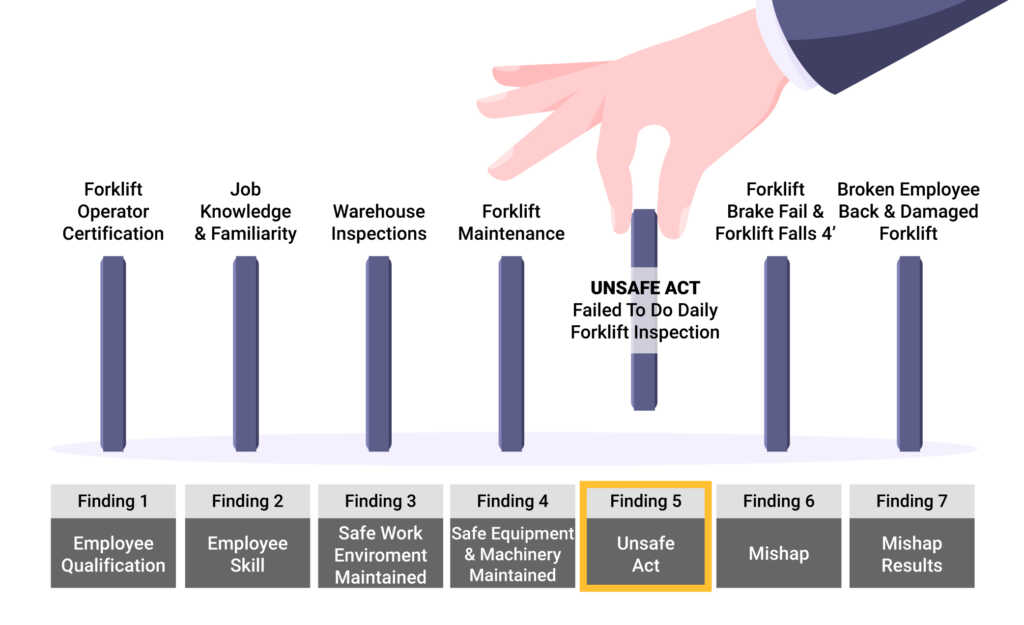Recommending a corrective action to help prevent an incident is an essential part of an accident investigation and a major reason we investigate.
In Part 1 of our Accident Investigation Series, we examined a forklift incident that led to an employee being sent to the hospital. In the investigation, we found that Finding #5 was the factor and the root cause of the forklift mishap, and if removed, would prevent the mishap from occurring (see Figure 1). The forklift operator failed to do a daily forklift inspection. Hence, if the operator did complete the daily inspection, a puddle of brake fluid would have been discovered, and the forklift would be taken out of service until it could be repaired.

How do we prevent a forklift operator from failing to do a forklift inspection? This is the question our recommendation will need to answer. Before we start listing answers, here are a few dos and don’ts for effective accident investigation recommendations:
DO a review of the current company forklift policies, forklift certification training requirements, and when re-training personnel on existing requirements occurs.
- DON’T recommend that a new policy, regulation, or standard operating procedure is needed, especially when established guidelines exist but are not followed.
- DON’T recommend retraining/recertification of all forklift operators (avoid burning the whole forest to get to one tree). If an event was caused by a failure to follow an existing policy, the recommendation might only require the people involved to be re-trained.
- DON’T propose punitive actions (leave punishment out of a recommendation).
- DON’T make broad recommendations, such as to change the safety culture of the company.
DO ensure the department manager who is assigned the responsibility to implement the corrective action has the authority to do so.
- There may be more than one level in your company that has a hand in forklift operations.
- Follow the budget strings.
Are we done? Not yet! As the investigator, you will need to follow up on the recommendation. When should the recommendation be completed – in 30, 60, 90 days? Was your recommendation reasonable, and could it be followed? Did you get acknowledgment and buy-in from the forklift operations section of the company? If not, the chances of a recurrence are high.
After a month or so, take a few minutes to review the operations and your recommendation. Was your recommendation effective? Remember to work with the employees involved in a mishap to ensure their work environment remains a safe environment.

















